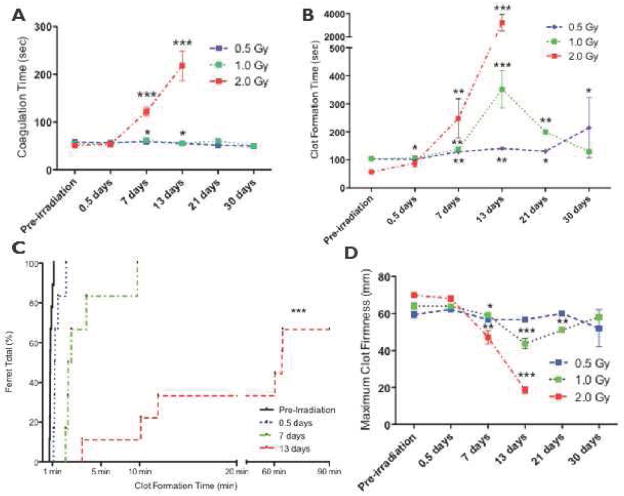Figure 3.
Whole blood clotting is severely impaired by proton radiation. Whole blood was collected from animals exposed to 0.5–2 Gy at pre-irradiation to 30 days post-irradiation. Whole blood was analyzed by rotational thromboelastometry (ROTEM). Statistical significance was obtained using a Student’s paired t-test; significance is reported for *p < 0.05, **p < 0.005, and ***p < 0.001. (A) Coagulation time (CT) is significantly increased with ferret exposure to 2 Gy of protons. (B) Clot Formation Time (CFT) is significantly affected by all doses of proton radiation with increases observed at 0.5–30 days. (C) The proton dose significantly increased the time to generate a stable clot, as measured by the clot formation time (CFT). The results from the ferrets were plotted in an inverse survival curve in which the percentage of animals reaching the CFT at a specific time was measured (See Supplementary Section for details of this technique). By day 7, 100% of the animals reached the CFT at ~ 10 min. At day 13, 67% reached the CFT by 60 min, and 33% of animals never reached the CFT (i.e., never formed a clot). The trend of the curves indicating that there is an increased percentage of the animals having increased CFT values is statistically significant (at p<0.05), as determined by using a Mantel-Cox test. (D) A significant decrease in the Maximum Clot Firmness (MCF) was observed, with the nadir at day 13 for ≥ 1 Gy. The 2 Gy cohort decreased rapidly to a terminal MCF of 19 ± 2 mm.

